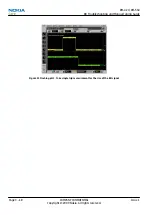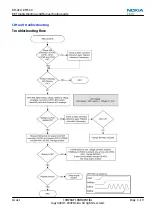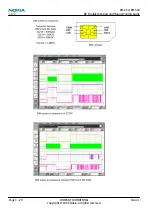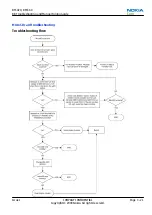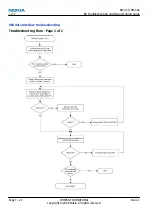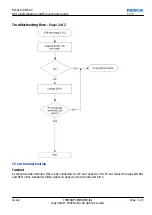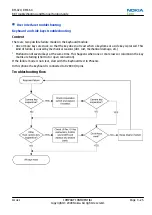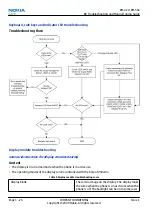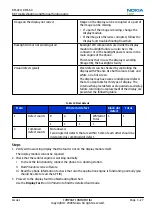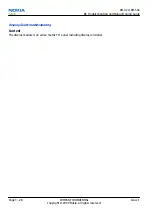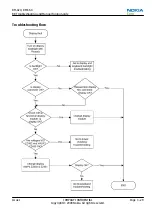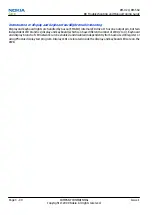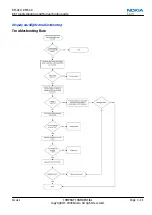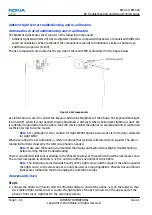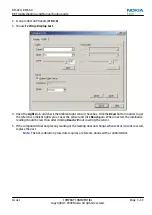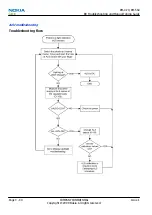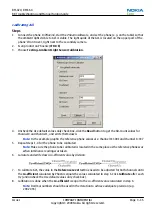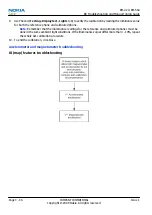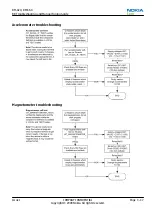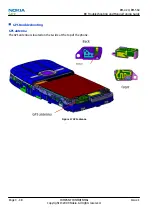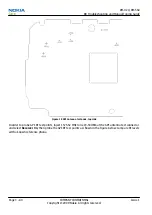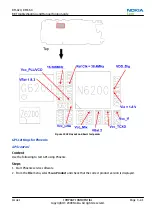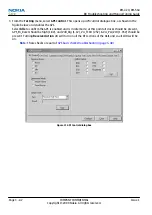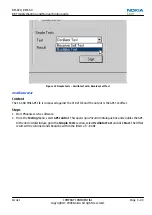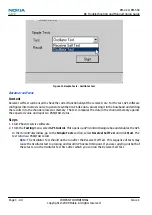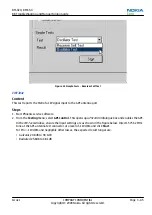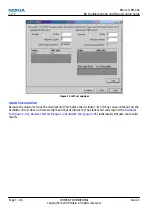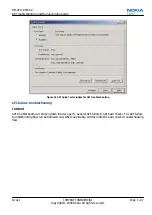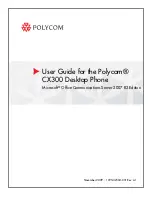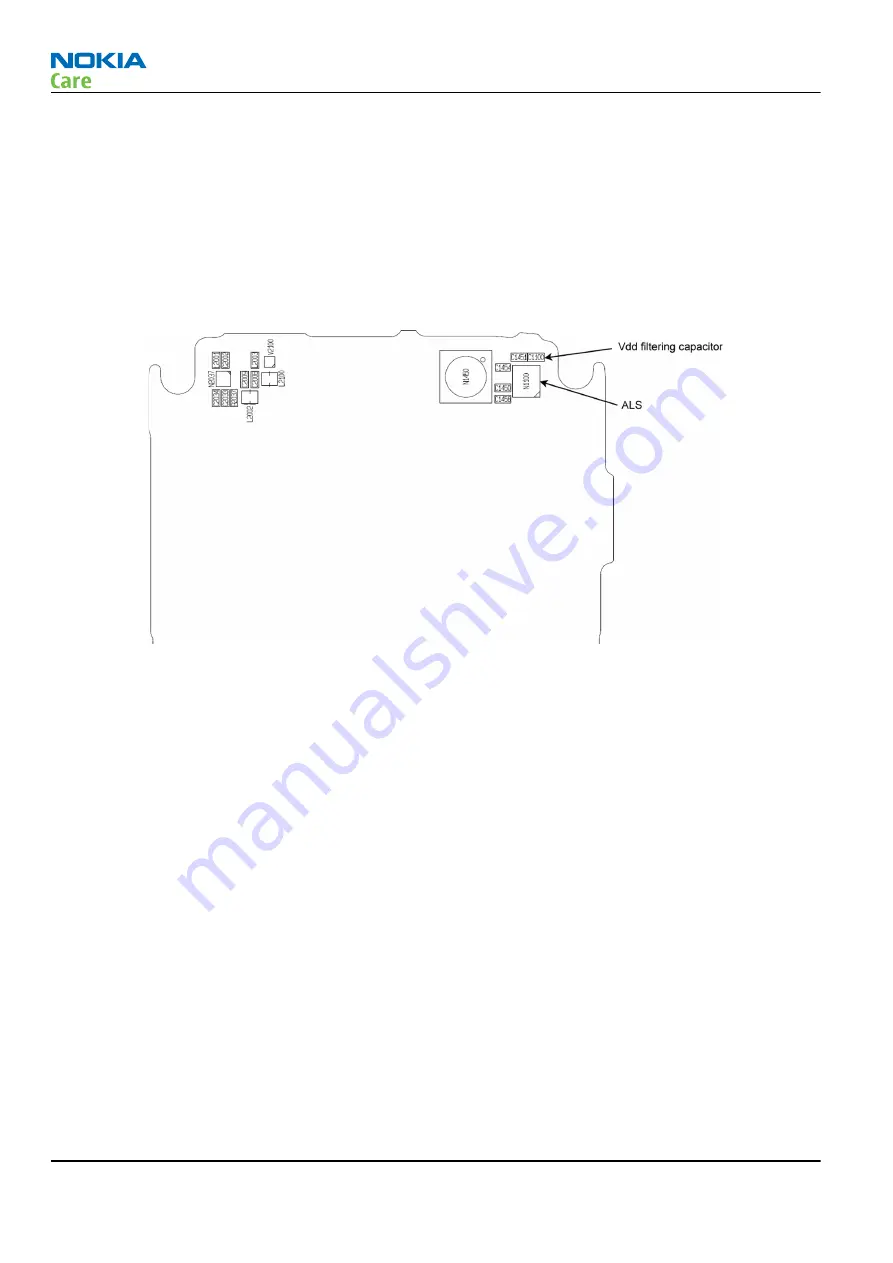
Ambient Light Sensor troubleshooting and re-calibration
Introduction to ALS troubleshooting and re-calibration
The Ambient Light Sensor (ALS) consists of the following components:
•
Ambient Light Sensor (N1100). ALS is a digital I2C interface component that has two channels with different
spectral sensitivities. When combined, the component responds to illuminance similar as human eye.
•
Vdd filtering capacitor (C1100)
The ALS components are located at the top side of the main PWB as illustrated in the figure below.
Figure 16 ALS components
ALS information is used to control the keypad and display brightness of the phone. The keyboard backlight
is turned OFF, when it is not needed. Display brightness is dimmed, when environment lighting is dark. ALS
is calibrated in production and can be re-tuned in service points though not recommended unless calibration
coefficient is lost for some reason.
Note:
ALS calibration is also required for Light SWAP Engines, because ALS is not factory calibrated
for Light SWAP.
When executing the ALS calibration, a reference phone that includes calibrated ALS is required. The ALS re-
tuning instructions show why the reference phone is needed.
Note:
Make sure that you have completed the display and keyboard backlights troubleshooting
before starting the ALS troubleshooting.
There is an Ambient Light Sensor window in the Phoenix Display Test tool, which shows the luminance value.
The correct luminance in darkness is <20 lx, and in an office environment 100-2000 lx.
Note:
The luminance value depends heavily on the light source and the angle of the phone against
the light source, so the values above can only be used as a rough guideline. Phoenix has an ambient
light sensor calibration tool for changing the calibration values.
Functionality check
Steps
1. Connect the phone to
Phoenix
, start the
Phoenix
software, and set the phone (e.g. on the table) so that
the ambient light visible to ALS is stable. The light quide of the ALS is located on the upper part of the
phone’s front cover, right next to the secondary camera.
RM-424; RM-564
BB Troubleshooting and Manual Tuning Guide
Page 3 –32
COMPANY CONFIDENTIAL
Issue 1
Copyright © 2009 Nokia. All rights reserved.
Содержание 6720 classic
Страница 133: ...4 RF Troubleshooting Nokia Customer Care Issue 1 COMPANY CONFIDENTIAL Page 4 1 Copyright 2009 Nokia All rights reserved ...
Страница 179: ...6 System Module Nokia Customer Care Issue 1 COMPANY CONFIDENTIAL Page 6 1 Copyright 2009 Nokia All rights reserved ...
Страница 209: ...Glossary Nokia Customer Care Issue 1 COMPANY CONFIDENTIAL Page Glossary 1 Copyright 2009 Nokia All rights reserved ...

